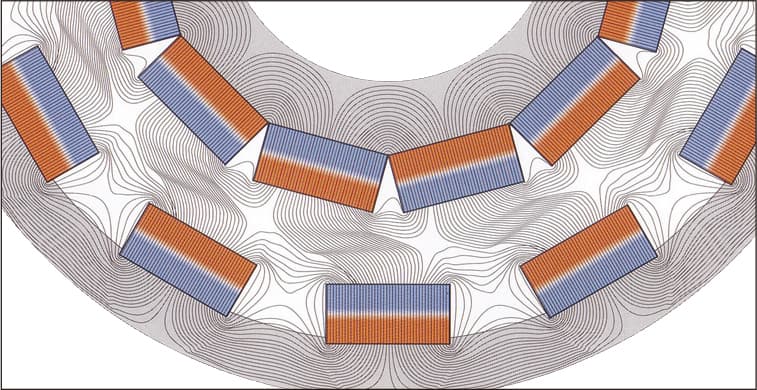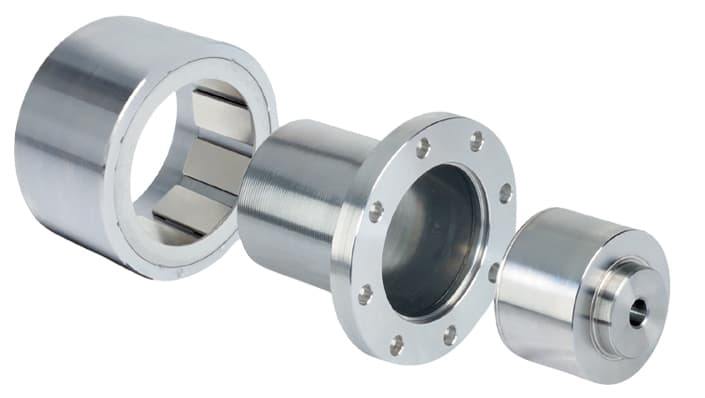The magnetic coupling mainly consists of an outer rotor and an inner rotor
The magnetic coupling mainly consists of an outer rotor and an inner rotor. The inner wall of the outer rotor is covered with high-quality magnets, and the two adjacent magnets are arranged in opposite poles. The inner rotor also has two magnets with opposite poles adhered to the outer circle. The outer rotor is usually mounted at the driving end with the magnet blocks adhered in the groove. The outer circle of the inner rotor at the driven end is finely ground to ensure minimum clearance between the inner and outer rotors and the isolation sleeve to prevent dielectric inflow.

In the stationary state, magnetic coupling magnetic field
In the stationary state, the north and south poles of the inner and outer rotor magnets attract each other and the magnetic field is perfectly symmetrical.

How to transmit the torque
When the inner rotors are twisted relative to each other, the magnetic field is deflected and the magnetic force generated can transmit the torque. The torque is transmitted by the magnetic field. The relative torsion angle of the inner and outer rotors is constant during stable operation to achieve synchronous transmission.
Overload protection function of magnetic coupling
In the event of an overload, the transferred torque exceeds the maximum transferable torque of the coupling and the torsional angle of the inner and outer rotors exceeds the maximum value, then the inner and outer rotors slip against each other and the torque transfer is interrupted. In this way, the magnetic coupling plays the role of overload protection in the transmission system. Once the overload (such as damaged bearing, stuck inner rotor, and other overload reasons) is eliminated, the inner and outer rotor can be synchronized with the normal transmission.



